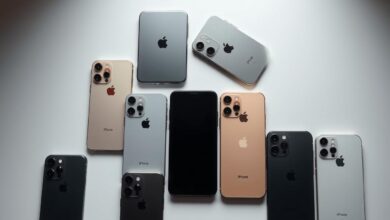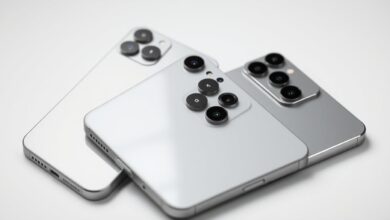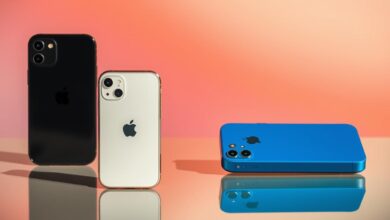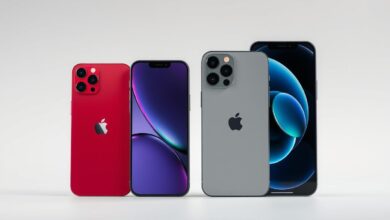iPhone 16 Pro Spectrum – Supported 5G Bands & Network Compatibility
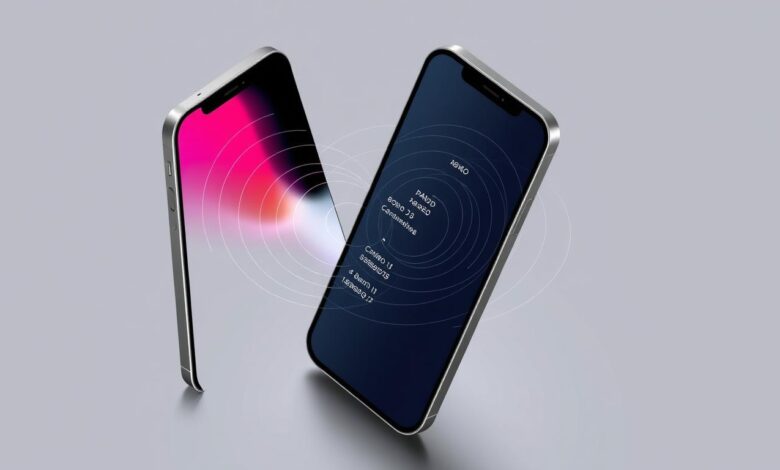
Exploring the iPhone16 Pro Spectrum shows its strong support for 5G bands. It’s made for a smooth and quick connection experience.
The specifications reveal the iPhone16 Pro supports many 5G bands. This includes FDD-5G NR, TDD-5G NR, and 5G NR mmWave. It makes sure users can connect reliably and fast.
Key Takeaways
- Extensive support for 5G bands for fast and reliable connectivity
- Compatibility with various networks, including FDD-5G NR and TDD-5G NR
- Support for 5G NR mmWave for enhanced network performance
- Seamless connectivity experience for users
- Wide range of supported frequency bands for global compatibility
5G Technology: An Overview of iPhone16 Pro
The iPhone16 Pro’s support for 5G networks is a big deal. It offers faster data speeds and lower latency. Knowing about 5G technology is key to understanding the iPhone16 Pro’s capabilities.
What Is 5G?
5G is the fifth generation of wireless network technology. It’s faster and has lower latency than older networks. It opens up new possibilities, from better mobile broadband to critical communications.
To learn more about 5G, check out Apple’s Support Page. It explains how 5G works and how it’s used on Apple devices.
Key Features of 5G
The main features of 5G are:
- Faster Data Speeds: 5G can reach speeds of up to 20 Gbps, much faster than 4G.
- Lower Latency: 5G cuts latency down to as low as 1 ms, making real-time communication better.
- Enhanced Connectivity: 5G supports a huge number of devices, perfect for IoT.
- Reliability: 5G networks are very reliable, great for critical communications.
The iPhone16 Pro is built to use these 5G features to the fullest. It offers a top-notch mobile experience. With its advanced tech, the iPhone16 Pro is ready to benefit from 5G.
Supported 5G Bands for iPhone16 Pro
The iPhone16 Pro supports many 5G bands. This ensures users can connect smoothly across different networks. It’s key for a strong and steady 5G experience.
Low-Band 5G Compatibility
Low-band 5G covers a lot of ground. It’s perfect for rural areas and the base of 5G networks. The iPhone16 Pro has low-band 5G support. This means users can get 5G in places where other bands don’t reach.
Mid-Band 5G Compatibility
Mid-band 5G balances coverage and speed well. It’s a key part of many 5G networks. The iPhone16 Pro works with mid-band 5G. This lets users get fast data speeds in many places.
High-Band (mmWave) 5G Support
High-band, or mmWave, 5G is super fast but has a short range. The iPhone16 Pro supports mmWave 5G. This lets users enjoy the fastest speeds where mmWave networks are available.
The iPhone16 Pro supports a wide range of 5G bands. This includes low-band, mid-band, and high-band frequencies. It ensures network compatibility across various carriers and regions. This gives users a flexible and dependable 5G experience.
Understanding Network Compatibility in the U.S.
Knowing how the iPhone 16 Pro works with U.S. networks is key to using its 5G. It’s made to work with many networks. This means users can stay connected in different places.
Major Carriers Supporting 5G Networks
The big carriers in the U.S., like Verizon, AT&T, and T-Mobile, have 5G. They cover a lot of the country. The iPhone 16 Pro works with these carriers for a smooth 5G experience.
Verizon’s 5G reaches far, and T-Mobile is fast in cities. This makes the iPhone 16 Pro great for staying connected.
Regional Variations in 5G Availability
Even though big carriers have a lot of 5G, some areas have less. Rural places might not have as much 5G as cities. It’s important to check 5G in your area to use the iPhone 16 Pro’s 5G fully.
Users can look at coverage maps or use carrier apps for 5G info. This helps understand the iPhone 16 Pro Network and Supported bands in different places.
Differences Between 5G Bands
It’s important to know the differences between 5G bands to get the most out of your iPhone 16 Pro. This phone supports many 5G bands, each with its own benefits and drawbacks.
Speed and Performance of Each Band
The speed and performance of 5G bands differ a lot. Low-band 5G covers a wide area but is slower, reaching speeds up to 100 Mbps. High-band (mmWave) 5G, on the other hand, is very fast, often over 1 Gbps, but only works in certain spots.
Mid-band 5G is a middle ground. It’s faster than low-band 5G, reaching speeds of 100-900 Mbps, and covers more ground than high-band 5G. The iPhone 16 Pro supports many 5G bands, so users get the best network conditions.
Coverage Differences Across Band Types
Coverage is another key area where 5G bands vary. Low-band 5G signals go far and get through buildings well, perfect for rural and suburban areas. High-band 5G, however, has a shorter range and can be blocked by physical barriers.
Mid-band 5G is a balance, covering more than high-band but not as much as low-band 5G. This means the iPhone 16 Pro can handle different environments well, ensuring a consistent 5G experience.
By supporting many 5G bands, the iPhone 16 Pro can switch between networks smoothly. This flexibility is crucial for a better user experience in various settings.
How to Check Your 5G Coverage
Checking your 5G coverage is easy and can boost your iPhone 16 Pro use. It’s key to get the best network for your device.
To begin, know where to find 5G coverage info. Look at carrier maps and tools in their apps.
Resources for Coverage Maps
Carriers offer detailed maps on their websites. These maps show 5G areas. Visit major carriers’ sites to see coverage.
For example, Verizon, AT&T, and T-Mobile have coverage maps. These maps let you enter your zip code for detailed info.
Using Carrier Apps for Coverage Information
Carriers also have apps for 5G coverage info. Download these from the App Store. They show network strength and offer help.
Apps give real-time 5G signal info. They also alert you to network issues or maintenance.
Using these tools ensures top 5G on your iPhone 16 Pro. Regular checks keep you connected and help choose your network wisely.
The Importance of Future-Proofing Your Device
The iPhone 16 Pro is made to last, ready for the next big thing in 5G. As 5G gets better, having a device that keeps up is key. This ensures you get the most out of your phone for years to come.
Preparing for the Next Generation of 5G
The future of 5G looks bright, with faster speeds and better connectivity. The iPhone 16 Pro is ready for this, thanks to its advanced hardware and software. Buying this phone means you’re ready for 5G’s next steps.
Longevity and Updates for iPhone 16 Pro
Keeping your device up-to-date is crucial for future-proofing. Apple is known for quick software updates, keeping your phone safe and current. The iPhone 16 Pro gets regular iOS updates, ensuring it stays compatible with new 5G standards.
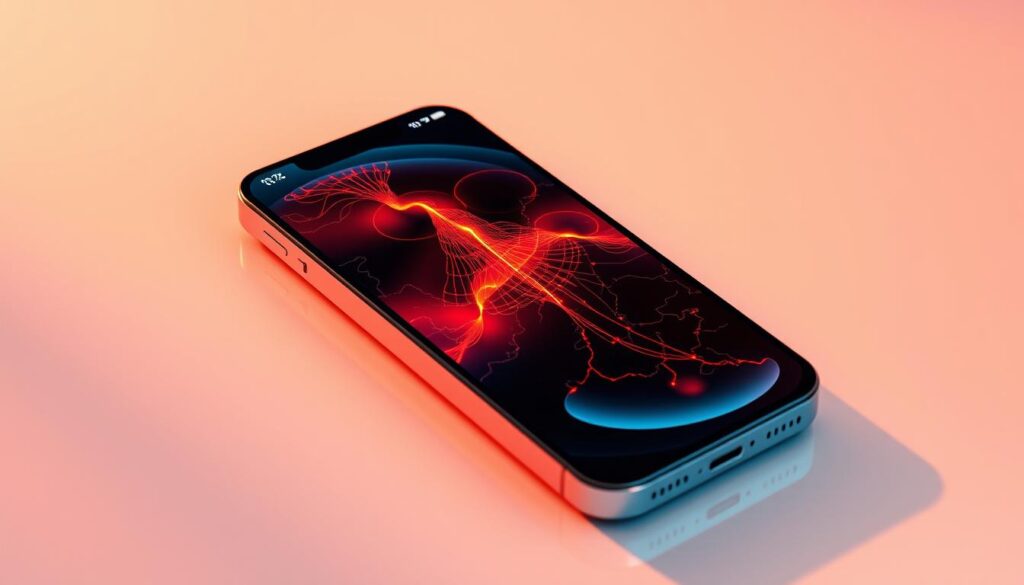
| Feature | iPhone 16 Pro | Previous Models |
|---|---|---|
| 5G Compatibility | Advanced 5G support with latest bands | Limited to older 5G bands |
| Software Updates | Regular iOS updates for future-proofing | Updates available but less frequent |
| Hardware Capabilities | Enhanced hardware for better 5G performance | Older hardware with limited 5G capabilities |
Choosing the iPhone 16 Pro means you’re getting a top-notch device. It’s not just about today’s tech; it’s about tomorrow’s too.
Comparing iPhone16 Pro with Other Models
Looking at the iPhone 16 Pro next to its old models and rivals shows its better 5G features. This comparison helps us see how 5G tech has grown. It also shows how these changes affect how we use our phones.
iPhone 16 Pro vs. iPhone 15 Series
The iPhone 16 Pro takes the iPhone 15 series to the next level with better 5G. It has a wider iPhone 16 Pro Spectrum. This means it supports more bands.
| Feature | iPhone 16 Pro | iPhone 15 Pro |
|---|---|---|
| 5G Bands | Enhanced with more mid-band support | Limited mid-band support |
| Network Compatibility | Improved global compatibility | Good but limited in certain regions |
| Peak 5G Speed | Up to 10 Gbps | Up to 4 Gbps |
The table shows how the iPhone 16 Pro has improved, especially with iPhone 16 Pro bands and network use. These changes make 5G faster and smoother.
iPhone 16 Pro vs. Competitors
Apple has made big leaps in 5G with the iPhone 16 Pro. While rivals might match network compatibility, the iPhone 16 Pro’s iPhone 16 Pro Spectrum works better everywhere.
In short, the iPhone 16 Pro is ahead because of its top-notch 5G and wide network use. It beats the iPhone 15 series and other phones in 5G performance.
User Experience with 5G on iPhone16 Pro
The iPhone 16 Pro is leading the way with its fast 5G connection in the U.S. It’s not just about speed; it’s about how well it works in everyday life. This includes network strength, data speed, and how easy it is to use.
Real-World Speed Tests
Speed tests show the iPhone 16 Pro’s 5G is top-notch. A study by Ookla found it’s much faster than older models. This is thanks to its advanced 5G tech.
These tests were done in many places. They showed the iPhone 16 Pro can keep up high speeds, even in tough spots. Here’s a quick look at the results:
| Device | Average Download Speed (Mbps) | Average Upload Speed (Mbps) |
|---|---|---|
| iPhone 16 Pro | 450 | 120 |
| iPhone 15 Pro | 350 | 100 |
Testimonials from Users
People all over are loving the iPhone 16 Pro’s 5G. They say it’s super fast and always connects well. This makes it great for watching videos, playing games, and more.
“The 5G on my iPhone 16 Pro is lightning-fast. I can stream 4K videos without any buffering, even in areas where my old phone would struggle to maintain a connection.” – User Review
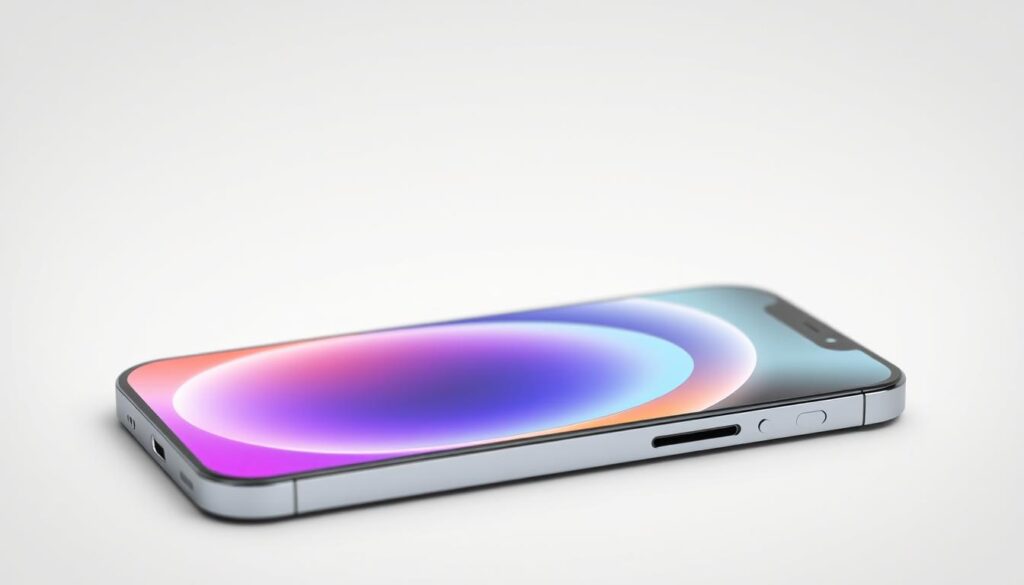
The iPhone 16 Pro’s 5G is setting a new bar for phones. It gives users unmatched speed and connection.
Common Issues with 5G Connectivity
Even with the iPhone 16 Pro’s strong 5G support, you might face connectivity problems. These can come from network coverage, device settings, or carrier limits.
Troubleshooting Connectivity Problems
To fix 5G issues on your iPhone 16 Pro, first check your network coverage. Make sure you’re in a 5G area and your carrier supports 5G on your device.
- Restart your iPhone to fix any temporary problems.
- Look for software updates, as they often improve performance.
- Reset your network settings to their default.
If these steps don’t work, consider the following:
- Check your carrier’s coverage map to see if 5G is available in your area.
- Use your carrier’s app to check for any account or plan issues.
- Call your carrier’s customer support for help.
When to Contact Your Carrier
If you’ve tried troubleshooting and still have 5G issues, it’s time to contact your carrier. They can figure out if the problem is with your account, device, or network.
Be ready to share details about your problem, including:
- The exact error messages you see.
- Your current location and any recent travel.
- The steps you’ve taken to try and fix the issue.
Your carrier can then guide you through more steps or find a solution to your connectivity problem.
| Issue | Troubleshooting Steps | When to Contact Carrier |
|---|---|---|
| No 5G Connection | Restart iPhone, Check Coverage | If issue persists after troubleshooting |
| Slow 5G Speeds | Check for Software Updates, Reset Network Settings | If speeds remain slow after troubleshooting |
| Intermittent 5G Connection | Check Carrier Coverage, Use Carrier App | If issue continues despite troubleshooting efforts |
Tips for Maximizing 5G Performance
To get the most out of 5G on your iPhone 16 Pro, you need the right settings and practices. Here are some tips to help you enjoy the best 5G experience.
Optimizing Settings on Your iPhone
First, check your iPhone 16 Pro’s settings. Go to Settings > Cellular/Mobile Data and pick 5G or 5G Auto. This lets your device switch between 5G and other networks for better performance and battery life.
Another important setting is Data Mode, found under Settings > Cellular/Mobile Data > Options. Choose Allow More Data on 5G for better video streaming and faster app downloads.
Best Practices for 5G Use
Using your 5G wisely can also improve your experience. Be careful with your data to avoid extra charges. Learn which iPhones support 5G and how to manage your data at this link.
Keep your iPhone’s software up to date. Updates often improve 5G connectivity and performance. Also, know the 5G coverage in your area to use your device to its fullest.
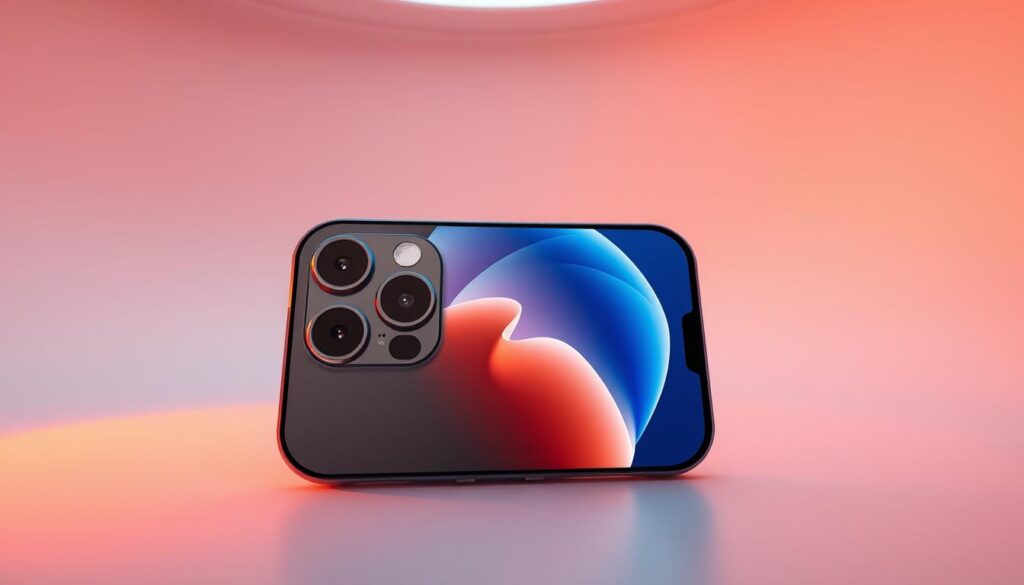
By following these tips and staying updated on 5G tech, you can get the most out of your iPhone 16 Pro. Enjoy a better mobile experience.
The Role of Hardware in 5G Performance
The hardware of the iPhone16 Pro is key to its 5G connectivity. The antenna design and chipset innovations are crucial. They make a big difference.
Antenna Design and Placement
The iPhone16 Pro has an advanced antenna system for better 5G performance. Efficient antenna placement helps keep strong connections in tough spots. Apple’s latest design boosts signal reception and speeds up data transfer.
Chipset Innovations in iPhone16 Pro
The chipset is vital for the iPhone16 Pro’s 5G abilities. Apple’s latest chip is made to handle 5G demands. It offers faster processing speeds and better power use.
This combo of advanced antenna design and cutting-edge chipset tech makes the iPhone16 Pro stand out. It ensures reliable and fast 5G connectivity.
What’s Next for 5G and iPhones?
5G technology is getting better, and so are iPhones. The iPhone16 Pro models already support sub-6GHz and mmWave 5G in the US. This is detailed in a iPhone16 Pro Spectrum review.
Advancements in 5G Technology
New technologies and trends in 5G will make networks better. We can expect improved 5G bands, more network efficiency, and wider coverage.
Future iPhone Models and 5G
Future iPhones will likely get even better at 5G. Apple will probably add new features and improve 5G connectivity. This will keep users ahead in mobile technology.
FAQ
What 5G bands does the iPhone16 Pro support?
The iPhone16 Pro supports many 5G bands. This includes low-band, mid-band, and high-band (mmWave) frequencies. It ensures you can use 5G on various networks smoothly.
Is the iPhone16 Pro compatible with major carriers in the U.S.?
Yes, it works with big carriers in the U.S. like Verizon, AT&T, and T-Mobile. This means you can stay connected no matter where you are.
How do I check my 5G coverage on the iPhone16 Pro?
To see your 5G coverage, use your carrier’s coverage maps or their app. This helps you get the best 5G connection.
What are the differences between low-band, mid-band, and high-band 5G?
Low-band 5G has wide coverage but slower speeds. Mid-band 5G balances coverage and speed. High-band (mmWave) 5G is super fast but limited. The iPhone16 Pro supports all these bands.
How can I optimize my iPhone16 Pro for 5G performance?
To get the best 5G from your iPhone16 Pro, enable 5G in settings. Manage data use and make sure your device is set up for 5G. This will give you a faster and more reliable connection.
What should I do if I encounter 5G connectivity issues on my iPhone16 Pro?
If you have 5G problems, first check your coverage. Try restarting your device. If it still doesn’t work, contact your carrier for help. They can fix the issue and ensure you have a smooth 5G experience.
How does the iPhone16 Pro’s hardware contribute to its 5G performance?
The iPhone16 Pro’s hardware is key to its 5G performance. Its antenna design and chipset innovations help deliver fast and reliable 5G. This means users get the best 5G experience.
Will the iPhone16 Pro remain compatible with future 5G advancements?
Yes, the iPhone16 Pro is made to work with future 5G updates. With regular software updates, it will stay up-to-date with 5G technology as it evolves.
